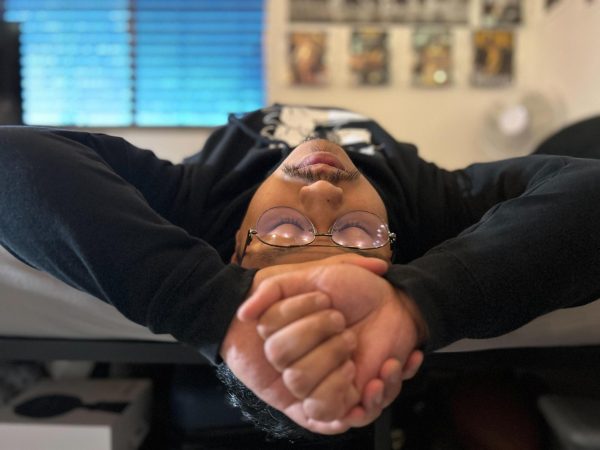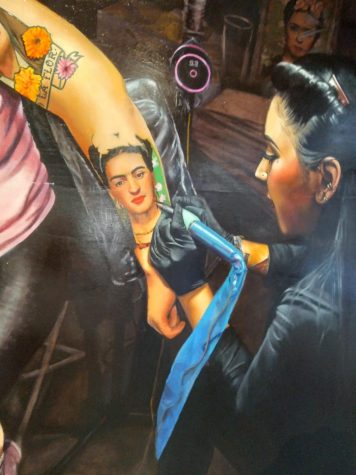Take out your ear plugs, kid’s music rocks!
Like the great days of Schoolhouse Rock, today’s kindie artists make children’s music cool again
I have watched the birth of many things. From being at the foot of the bed during the birth of my cousin to watching Steve Jobs announce the iPhone, being witness to the miracle of creation is spectacular. Over the past few years through my front row seat, I’ve watched something incredible emerge: the birth of a new genre of music and, chances are, you’ve never heard of it.
Independent children’s music, now known as “kindie” music, has slowly been rising in popularity over the past few years. Children’s music seems to be synonymous with bad music. Music that is poorly made for a demographic that does not care or know the difference. Surprisingly, this isn’t how it’s always been. Children’s music was, more often than not, music with whimsical lyrics. It reflected the music of the day and was usually just as complicated, jazzy, or pop driven as the music for adults.
In the 1970s, Schoolhouse Rock changed things. It was an incredible idea to make music that would help children learn facts and figures within well-crafted, catchy tunes. This was a turning point that changed children’s music forever. Unfortunately, the quality of Schoolhouse Rock has been hard to replicate, and following their success was a push in current child rearing books that it was never too soon to learn and never too early to push a positive behavior. That soon translated to a new breed of children’s music. The following two decades of music for children were often approached specifically with education in mind and music as an afterthought. Somewhere along the way, anyone over, say, the age of ten, was excluded. The thought was that for a child to grasp the idea, it must be simple and repetitive.
Years of music like that on Barney & Friends earned the reputation among listeners and artists as being all that is wrong with children’s music and made music no longer a shared experience. Children tuned in and parents tuned out.
In the 21st century musicians, sometimes parents themselves, started to write music, once again, that they’d want to listen to as a family. The kindie genre focuses on bringing families together to listen, sing, and dance. Whether just for entertainment or songs with a more educational slant, these artists have found a path to success by not having to answer to anyone except themselves and their listeners to create quality, creative music. There was a consensus within the genre that learning happens in many ways in music. Sure, it could be a song about your ABCs, but maybe many more synapses might be firing if music was rich and lyrics were about experiences they could appreciate. As Joe Mailander of The Okee Dokee Brothers, who won a Grammy for the album Can You Canoe? said, “It seems like we’re all gathered around a cause: To change the common misperception that kid’s music is always cheesy, dumbed-down, and hard to listen to, and rather, provide a quality, clever, and creative alternative.”
Because of musicians like Mailander, kindie music is slowly becoming a self-sustaining genre. It has created a community of like minded people who want their children, all children, to listen to quality music.
Like any genre of music, the kindie scene is made up of its own community of musicians, artists, bloggers, publicists, parents, families, and other listeners from around the country who are involved in all aspects of making this new genre successful. It is played live daily in schools, libraries, bookstores, festivals, clubs, concert venues and on radio stations and podcasts.
My father is Todd McHatton, a well respected artist in the kindie genre. He wrote and recorded one of the most successful kindie songs to date, I Think I’m A Bunny. I work with him as puppeteer and as tech support. I am also a correspondent for the popular family website Out With The Kids. Having made close friends with many people in all corners of this genre, I have had a front row seat for the birth of this new world of kid’s music.
One of the driving forces in the creation of kindie is the timing of new, available, independent channels in music. This disruption of traditional routes, like no longer needing a record deal to reach fans, has consequently led to the creation of a rather tight knit society that is devoted to making, playing, promoting, and listening to quality music that is made for kids and families to enjoy together. As Morgan Taylor of the award winning Gustafer Yellowgold DVD series, explained, “I do feel it’s a community where the kids’ music artists want to perform with each other, share thoughts and ideas and make friendships. Yeah, the independent part is what gives the community a reason to get together and share experiences with each other to get new and better ideas of how to do things to have success in the music industry. Meeting with other like-minded people going through many of the same experiences does create friendships for sure.”

One major characteristic of almost everyone you meet in the kindie genre is their approachability. Approachability can be seen almost as a necessity within the kindie community. Because this culture deals with children’s entertainment as well as social networking, I have found kindie musicians to be friendly and easy to talk to, an adaption for the genre’s requirements. CJ Pizarro, who performs as Mista Cookie Jar, responded, “I think it’s a prerequisite to be a nice person in this scene. It’s all about family when it comes to kindie. You get a sense, everyone’s on the same team. People are in it for the love.” Jeff Bogle, kindie blogger and Huffington Post contributor, said, “The idea is that what is good for one is good for all, that lifting up the entire collection of independent family musicians, thus raising the public consciousness of the overall scene, will benefit everyone involved with it in the long run.”

But some folks do not feel that the kindie genre gets the respect and acceptance it deserves. David Tobocman, a kindie musician who also composes music for film and television, responded, “The industry is peopled with hipsters and when they find out that I make albums for kids they give me an attitude of ‘well, someone’s got to do it.’” Christina Refford, writer for the nationally recognized blog Cool Mom Picks, agreed. “The biggest obstacle is that the big machine (Disney) continues to churn out mediocre pop music for kids and they get so much visibility, it colors the entire genre.” Some, however, believe this outlook is in a state of change. Jason Rabinowitz of The Pop Ups, who was nominated for a Grammy, said, “I do think that in recent years it’s become more acceptable among the music industry at large to be a kids artist. I feel like even a few years ago the pool of kid’s musicians was smaller… If anything, I feel like being a kid’s entertainer has opened doors for me.
“I feel that many adults hear the words “music for kids” and roll their eyes with some antiquated vision of what that means. BUT, once they’ve been rocked by a kindie show, they’re the first to think they’ve discovered America or something.” Mindy Thomas, program director, Kids Place Live
Thomas serves as the program director of Sirius XM Kids Place Live, a station devoted exclusively to kids music, and host of “The Absolutely Mindy Show.” Thomas said, “In many ways, I feel like the kindie community is like The Island of Misfit Toys. And that is one of the aspects that I love most about it. It’s a trait (can I call it a trait?) that seems to run through the artists that are most successful in this genre of music. They’re making music, that comes together organically, and from an honest, sometimes accidental place. I feel like the idea of “kids’ music” is being constantly reinvented by these genius weirdos, with endless amounts of passion, energy, and respect for their audience.”

To be all inclusive, the genre has to adapt to fit the needs of a wide range of ages. Todd McHatton added, “I don’t believe we feel the separation of ‘when I was a kid.’ We feel the kid, the teenager, the adult -all of it- in all of us, all the time. At least that’s the sense I get from everyone; the value placed on every beautiful moment in life.”
So many lyrics in this genre seem to be metaphorical. Something as simple as a song about a moth that would interest a child on a simple, imaginative level, could be also pulling at the heart-strings of a mother listening to words about a moth that will never be a butterfly, while the dad is grooving to the complicated guitar riffs.

Bogle responded, “Most of the musicians writing and performing for families under the umbrella of kindie music understand and respect that their role is not to pander or condescend or even teach, but to provide a musical doorway into the life of a child, with all of the universal and specific occurrences and thoughts of childhood streaming through the music, so that parents (who were once children) and children alike can find themselves inside the songs, can find common ground, and have a ton of fun together along the way.” Morgan Taylor added, “A guy said about my music and show, ‘It’s so much better than it needs to be.’”
As Pizarro explained, “Because so much of the movement is DIY, the community works as a natural checks and balance system. The quality of the scene is real, for the bloggers, to the DJs, to the organizers and artists.” Thomas added, “There is also this beautiful and exciting sense of cooperation and collaboration between artists, with a spirit of ‘we’re all in this thing together’ rather than cut throat competition.”

So as I sat tonight in a crowded restaurant in Los Angeles, enjoying the catchy tunes of contagiously energetic Lucky Diaz and Alisha Gaddis at the release party for their new PBS Kids TV series, Lishy Lou and Lucky Too, I found it easy to get caught up in the swirling whirlwind of optimism and joy that radiates from the stage. Kids and parents alike were laughing, dancing, and sharing this experience, as a family, and as a community. These artists and fans already know what many more are quickly discovering, that no one has to listen to bad kids music and instead everyone can bounce to the beat and enjoy the emerging genre that is kindie.
Substance is a publication of the Mt. San Antonio College Journalism Program. The program recently moved its newsroom over to Medium as part of a one-year experiment. Read about it here.















